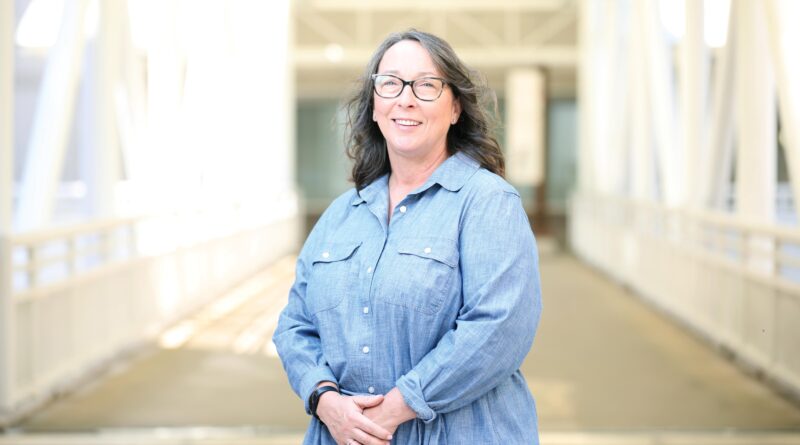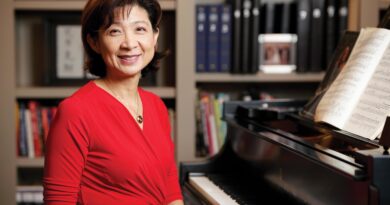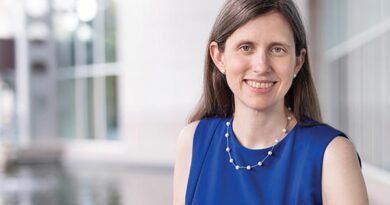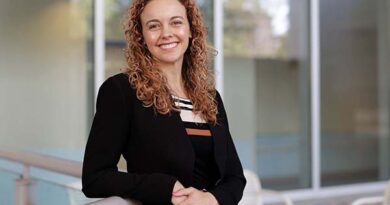Meet the people who bring hope to families every day.
Published on September 9th, 2021 by Emily Stembridge.
Monroe Carell Jr. Children’s Hospital at Vanderbilt delivers high-quality care, creates a welcoming environment for parents and children, and serves as a resource for the surrounding community. None of these things would be possible without the people who make up Children’s Hospital — from the physicians and nurses who provide care for sick children to child life specialists, social workers, pharmacists and more. This wide array of expertise means Children’s Hospital is equipped to handle any issue a child may face — no matter how complex.
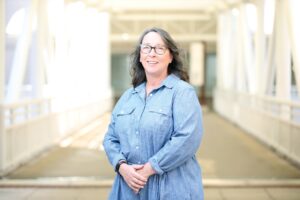
Nancy Jaworski, APRN, DNP
VAD coordinator
Nancy Jaworski, APRN, DNP, oversees some of the most complex procedures pediatric patients can undergo: implantations of portable ventricular assist devices (VADs), which help circulate blood throughout the body and serve as the first step in the journey toward heart transplantation for the sickest of transplant candidates.
Four years ago, Jaworski came to Vanderbilt as a pediatric cardiac intensive care unit nurse, and then joined the pediatric transplant and VAD team two years ago. She now serves as the VAD coordinator overseeing all aspects of VAD implantations for children. Jaworski, who has been a nurse for 20 years, finds joy in witnessing medical advances that allow sick children to recover from illnesses and conditions that would have been impossible to recover from years ago.
“When I get to send a child home with their parents, it’s a good day at work,” she said. “Getting the chance to walk a family’s journey with them and be there for them is the best part of what I do. I get to help them process what’s going on and be there with them every step of the way. It’s about the patients — it’s always been about the patients.”
As the VAD coordinator, Jaworski helped turn the VAD program from an evolving team of health care providers into a polished, well-oiled machine with plenty of resources to offer families. She formed a VAD-focused advisory committee, reached out to national transplant programs, collaborated with pediatric specialists and studied VAD guidelines from other institutions. With all of the information she gathered, Jaworski successfully established standard operating procedures for all future pediatric VAD implantations.
The operating procedures are constantly being evaluated, ensuring the most up-to-date standards are always in place. Every day, the VAD team meets to streamline its communication, with the goal of limiting patients’ days spent in the ICU and hopefully allowing children to go home while they wait for their transplant. By successfully doing these two things, the VAD team saved close to $500,000 in medical expenses in its first year of operation.
Since beginning her efforts to establish a coordinated pediatric VAD program, Jaworski has always placed preserving patients’ childhood and parents’ sanity above all. “I look at every single kid, and I think if this were my kid, this is what I would want someone to help me with. We give them a future and we make it one worth living.”
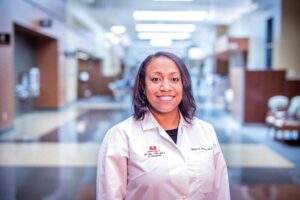
Erin Boyd, MD
Assistant Professor of Pediatrics
Erin Boyd, MD, assistant professor of Pediatrics in the Division of Adolescent and Young Adult Health, tackles mental, social and emotional complexities with her patients, serving as their one-stop resource for all things in adolescent health. As an expert in adolescent HIV/AIDS, transgender health, childhood obesity, contraception, puberty, healthy relationships and more, Boyd relies on the coveted trust of adolescents in order to best treat them.
A Vanderbilt University graduate, Boyd was drawn back to Monroe Carell Jr. Children’s Hospital at Vanderbilt because it provided her an opportunity to pursue her interests, which specifically include HPV vaccination implementation and PrEP (pre-exposure prophylaxis, a medication for people at risk for HIV), with a large support system around her. She also has a passion for training residents and medical students in these complex topics.
“Adolescents are an underserved population who have their own unique challenges in growth and development. My interest in adolescent health allows me the opportunity to change and influence this population as they become adults,” she said.
Boyd realizes that trust plays a large part in providing the best care for her adolescent patients, and she frequently draws on her own life experiences to build rapport.
“I try to establish a relationship with my patients by connecting on something that they are also interested in. I fully focus on the patient when I’m in the room — I let them know that this is their visit. I give them an opportunity for one-on-one time where we can talk and ask questions about things they may not feel fully comfortable talking to their parents about just yet. Connecting with them and letting them know that, within reason, our conversation is confidential, is the best way to establish trust,” Boyd said.
Positively influencing the next generation is the reason Boyd is interested in adolescent health, as adolescents are at a vulnerable crossroads in their transition from childhood to young adulthood. Boyd uses her expertise to be an ally for young patients as they grow up, teaching them how to take ownership of their health.
Teaching not only her patients, but also residents, something new each day that can be carried forward in their daily lives or future practice is what Boyd considers the most important aspect of her job.
“I can’t expect to make a huge change right away, but if I can give them one solid take-home point each time I see them, that’s a win for me,” Boyd said.

